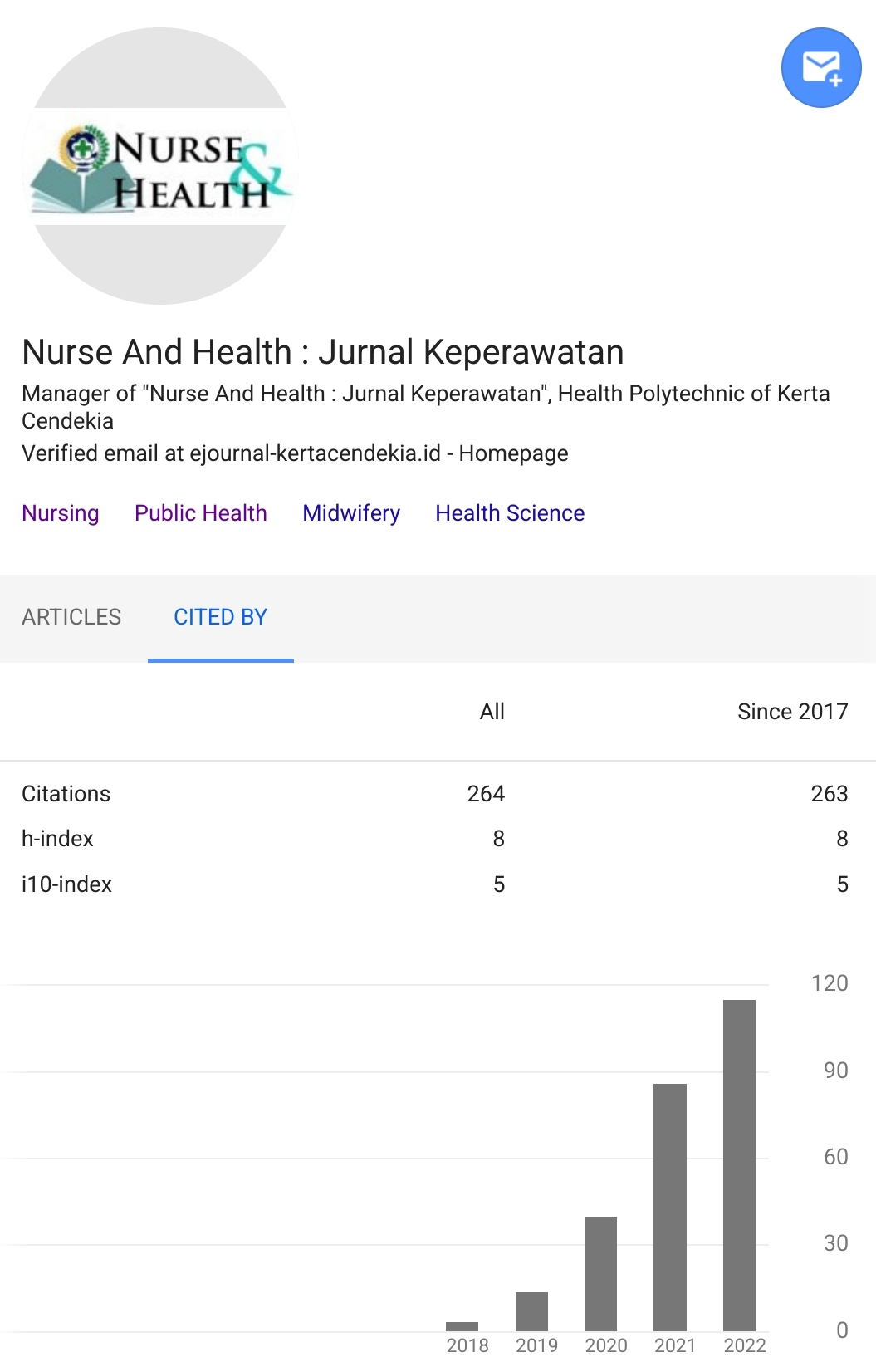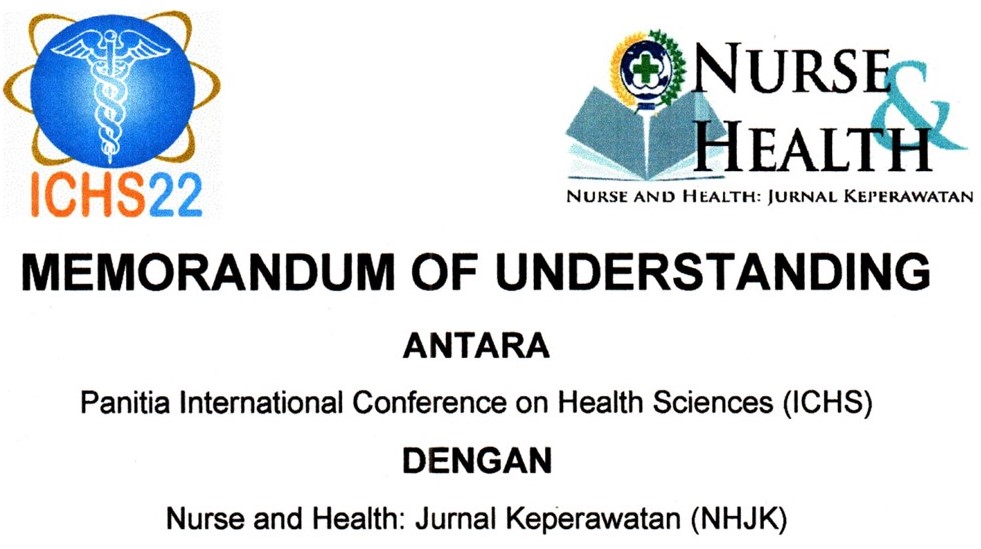NURSING STRUCTURAL EMPOWERMENT: A CONCEPT ANALYSIS
Abstract
Background: The concept of empowerment originated from the social sciences in the twentieth century. The concept was adopted in nursing to increase the professional progress of nursing sciences. The concept of empowerment is used in nursing as two constructs: structural and psychological. Objectives: The purpose of this paper is to perform a concept analysis of structural empowerment from a nursing perspective. Methods: Walker and Avant’s method of concept analysis was used Results: Autonomy and influence are considered major attributes of the structural empowerment concept in nursing. The method used for concept analysis provided purposeful clarification of the concept and confirmed the findings of the analysis. Conclusion: Structural empowerment in nursing has contributed positively to nurses, patient care, and organizations. It is linked to better quality effects, patient safety, and work effectiveness. Among leadership, it is associated with enhanced role satisfaction. Both inside and outside of organizational contexts, educational programs should play a part in developing empowerment since empowered nurses are more inclined to exercise skills like decision-making, problem-solving, and caregiving. Entail instructional programs to foster critical thinking, leadership, and better comprehension of nursing.Downloads
References
Aggarwal, A., Dhaliwal, R. S., & Nobi, K. (2018). Impact of Structural Empowerment on Organizational Commitment: The Mediating Role of Women’s Psychological Empowerment. Vision, 22(3), 284–294. https://doi.org/10.1177/0972262918786049 DOI: https://doi.org/10.1177/0972262918786049
Al-Dweik, G., Al-Daken, L. I., Abu-Snieneh, H., & Ahmad, M. M. (2016). Work-related empowerment among nurses: literature review. International Journal of Productivity and Quality Management, 19(2), 168-186 DOI: https://doi.org/10.1504/IJPQM.2016.078885
Bruce J. Avolio, Weichun Zhu, William Koh, & Puja Bhatia. (2004). Transformational Leadership and Organizational Commitment: Mediating Role of Psychological Empowerment and Moderating Role of Structural Distance. Journal of Organizational Behavior, 25(8), 951–968. DOI: https://doi.org/10.1002/job.283
Carlson, M.S.” The Relationship between Organization Factors and Perceived Power: Study of Female Administrators in Minnesota Institutions of Higher Education.” PhD diss. Minneapolis, Minn: University of Minnesota,1983.
Chandler, G. E. (1986). The Relationship of Nursing Work Environment to Empowerment and Powerlessness, Unpublished Doctoral Dissertation, University of Utah, Salt Lake City , UT.
Conger, J. A., & Kanungo, R. N. (1988). The Empowerment Process: Integrating Theory and Practice. In Source: The Academy of Management Review 13 (3). https://www.jstor.org/stable/258093?seq=1&cid=pdf- DOI: https://doi.org/10.2307/258093
Connolly, M., Jacobs, S., & Scott, K. (2018). Clinical leadership, structural empowerment and psychological empowerment of registered nurses working in an emergency department. Journal of Nursing Management (John Wiley & Sons, Inc.), 26(7), 881–887. https://doi-org.sdl.idm.oclc.org/10.1111/jonm.12619 DOI: https://doi.org/10.1111/jonm.12619
Deci, E. L., & Ryan, R. M. (2000). The" what" and" why" of goal pursuits: Human needs and the self-determination of behavior. Psychological inquiry, 11(4), 227-268. DOI: https://doi.org/10.1207/S15327965PLI1104_01
Ding, J., & Xie, Z. (2021). Psychological empowerment and work burnout among rural teachers: Professional identity as a mediator. Social Behavior & Personality: An International Journal, 49(6), 1–9. https://doi-org.sdl.idm.oclc.org/10.2224/sbp.10241 DOI: https://doi.org/10.2224/sbp.10241
Friend, M. L., & Sieloff, C. L. (2018). Empowerment in Nursing Literature: An Update and Look to the Future. Nursing Science Quarterly, 31(4), 355–361. https://doi-org.sdl.idm.oclc.org/10.1177/0894318418792887 DOI: https://doi.org/10.1177/0894318418792887
Grenny J, Patterson K, Maxfield D, McMillan R, Switzler A. Influen- cer (2013) .The New Science of Leading Change, 2nd ed. New York, NY: McGraw‐Hill Professional
Ibrahem, S. Z., Elhoseeny, T., & Mahmoud, R. A. (2013). Workplace empowerment and organizational commitment among nurses working at the Main University Hospital, Alexandria, Egypt. Journal of the Egyptian Public Health Association, 88(2), 90–96. https://doi.org/10.1097/01.EPX.0000430957.52814.8a DOI: https://doi.org/10.1097/01.EPX.0000430957.52814.8a
Jay A. Conger, & Rabindra N. Kanungo. (1988). The Empowerment Process: Integrating Theory and Practice. The Academy of Management Review, 13(3), 471–482. DOI: https://doi.org/10.5465/amr.1988.4306983
Kanter, R.M. (1977). Men and Women of the Corporation. New York, N.Y: Basic Books.
Kanter, R.M. (1979),’Differential Access to Opportunity and power. “In Discrimination in Organizations, edited by R. Alnarez, and K.G Skitterman. San Francisco, Calif: University of Western Ontario.
Kretzschmer, S., Myers, J., Stikes, R., Walker, M., Massouda, J., Pritchett, M., Logsdon, M. C., Gottbrath, D., & Vogt, K. (2017). Nursing Empowerment, Workplace Environment, and Job Satisfaction in Nurses Employed in an Academic Health Science Center. Journal for Nurses in Professional Development, 33(4), 196–202 DOI: https://doi.org/10.1097/NND.0000000000000363
Kuokkanen L, Suominen T, Härkönen E, Kukkurainen M, & Doran D. (2009). Effects of organizational change on work-related empowerment, employee satisfaction, and motivation. Nursing Administration Quarterly, 33(2), 116–124. https://doi-org.sdl.idm.oclc.org/10.1097/NAQ.0b013e3181a10c86 DOI: https://doi.org/10.1097/NAQ.0b013e3181a10c86
Kuokkanen, L., & Leino-Kilpi, H. (2001). The qualities of an empowered nurse and the factors involved. Journal of Nursing Management, 9(5), 273–280. https://doi-org.sdl.idm.oclc.org/10.1046/j.1365-2834.2001.00253.x DOI: https://doi.org/10.1046/j.1365-2834.2001.00253.x
Kuokkanen, L., Leino-Kilpi, H., Katajisto, J., Heponiemi, T., Sinervo, T., & Elovainio, M. (2014). Does organizational justice predict empowerment? Nurses assess their work environment. Journal of Nursing Scholarship, 46(5), 349–356. https://doi-org.sdl.idm.oclc.org/10.1111/jnu.12091. DOI: https://doi.org/10.1111/jnu.12091
Kuokkanen, L., Rn, M., & Leino-Kilpi, H. (2000). Power and empowerment in nursing: three theoretical approaches. In Journal of Advanced Nursing 31(1). DOI: https://doi.org/10.1046/j.1365-2648.2000.01241.x
Laschinger H.K.S. & Havens D. (1996). Staff nurse work empowerment and perceived control over nursing practice Conditions for work effectiveness. Journal of Nursing Admin- istration 26 (9), 27–35. DOI: https://doi.org/10.1097/00005110-199609000-00007
Laschinger H.K.S., Finegan J. & Wilk P. (2011) Situational and dispositional influences on nurses’ workplace well-being the role of empowering unit leadership. Nursing Research 60 (2), 124–131. DOI: https://doi.org/10.1097/NNR.0b013e318209782e
Laschinger H.K.S., Finegan J., Shamian J. & Wilk P. (2004) A longitudinal analysis of the impact of workplace empower- on work satisfaction. Journal of Organizational Behavior 25 (4), 527–545. DOI: https://doi.org/10.1002/job.256
Laschinger H.K.S., Leiter M., Day A. & Gilin D. (2009) Workplace empowerment, incivility, and burnout: impact on staff nurse recruitment and retention outcomes. Journal of Nursing Management 17 (3), 302–311. DOI: https://doi.org/10.1111/j.1365-2834.2009.00999.x
Laschinger, H.K.S., Kutzscher, L.I.T, and Sabiston, J.A. (1994)” Job Activities Scale. “Unpublished data collection instrument. London, Ontario Canada: University of western Ontario.
Laschinger, H.K.S., Sabiston, J.A, and Kutzscher, L.I.T. (1994). “Organization Relationship Scale.” Unpublished data collection instrument. London, Ontario, Canada: University of Western Ontario.
Lautizi M., Laschinger H.K.S. & Ravazzolo S. (2009) Work- place empowerment, job satisfaction and job stress among Italian mental health nurses: an exploratory study. Journal of Nursing Management 17 (4), 446–452. DOI: https://doi.org/10.1111/j.1365-2834.2009.00984.x
Li, H., Shi, Y., Li, Y., Xing, Z., Wang, S., Ying, J., Zhang, M., & Sun, J. (2018). Relationship between nurse psychological empowerment and job satisfaction: A systematic review and meta-analysis. In Journal of Advanced Nursing 74(6) https://doi.org/10.1111/jan.13549 DOI: https://doi.org/10.1111/jan.13549
Liao, R., & Liu, Y. (2016). The impact of structural empowerment and psychological capital on competence among Chinese baccalaureate nursing students: A questionnaire survey. Nurse Education Today, 36, 31–36. https://doi-org.sdl.idm.oclc.org/10.1016/j.nedt.2015.07.003 DOI: https://doi.org/10.1016/j.nedt.2015.07.003
Manojlovich M. & Laschinger H.K.S. (2007) The Nursing Worklife Model: extending and refining a new theory. Journal of Nursing Management 15 (3), 256–263 DOI: https://doi.org/10.1111/j.1365-2834.2007.00670.x
McEwen, Melanie & Wills, Evelyn M. (2019). Theoretical basis for nursing.5th edition. Wolters Kluwer.
Meleis AI. (2007). Theoretical nursing: development and progress. 4th ed. Philadelphia: Lippincott Williams & Wilkins.
Merriam-Webster Learner’s Dictionary, (2021), Empowerment, https://learnersdictionary.com/definition/empowerment
Moscato, S.R. (1987)” The Relationship between Organizational and Positional Factors and the Perceived Power of the Nurse Administrators in Acute Care Major Hospitals. PhD diss. Portland, Ore: Portland State University.
Orgambídez-Ramos, A., & Borrego-Alés, Y. (2014). Empowering Employees: Structural Empowerment as Antecedent of Job Satisfaction in University Settings. Psychological Thought, 7(1), 28–36. https://doi-org.sdl.idm.oclc.org/10.5964/psyct.v7i1.88 DOI: https://doi.org/10.5964/psyct.v7i1.88
Oxford Leaner’s dictionary, (2021), Empowerment https://www.oxfordlearnersdictionaries.com/definition/english/empowerment?q=empowerment+
Purdy, N., Spence Laschinger, H.K., Finegan, J., Kerr, M. and Olivera, F. (2010), “Effects of work environments on nurse and patient outcomes”, Journal of Nursing Management, 18 (8)pp. 901-913 . http://dx.doi.org/10.1111/j.1365-2834.2010.01172.x DOI: https://doi.org/10.1111/j.1365-2834.2010.01172.x
Rappaport, J. (1987). Terms of empowerment/exemplars of prevention: Toward a theory for community psychology. American Journal of Community Psychology, 15(2), 121. https://doi-org.sdl.idm.oclc.org/10.1007/bf00919275
Rappaport, J. (1987). Terms of Empowerment/Exemplars of Prevention: Toward a Theory for Community Psychology 1. In American Journal of Community Psychology ,15( 2). DOI: https://doi.org/10.1007/BF00919275
Rodgers BL, Knafl KA. (2000). Concept development in nursing. 2nd ed. Philadelphia: WB Saunders.
Sagaria, M. A. D. (1980). Men And Women Senior Academic Administrators: A Study Of Selected Factors Contributing To Perceived Power Of Individuals In Colleges And Universities (Order No. 8024491). Available from ProQuest Dissertations & Theses Global. (303076821). https://www.proquest.com/dissertations-theses/men-women-senior-academic-administrators-study/docview/303076821/se-2?accountid=142908.
Spence Laschinger, H. K., Wong, C. A., & Greco, P. (2006). The Impact of Staff Nurse Empowerment on Person-Job Fit and Work Engagement/Burnout. In Nurs Admin Q 30( 4). DOI: https://doi.org/10.1097/00006216-200610000-00008
Spreitzer, G. (2008). Taking stock: A review of more than twenty years of research on empowerment at work. SAGE Publications Inc. https://doi-org.sdl.idm.oclc.org/10.4135/9781849200448.n4 DOI: https://doi.org/10.4135/9781849200448.n4
Spreitzer, G. M. (1995). Psychological, Empowerment in the Workplace: Dimensions, Measurement and Validation. Academy of Management Journal, 38(5), 1442–1465. https://doi-org.sdl.idm.oclc.org/10.2307/256865 DOI: https://doi.org/10.2307/256865
Ta'an, Wafa'a F. Alhurani, Jumanah ,Alhalal, Eman ,Al-Dwaikat, Tariq N., Al-Faouri, Ibrahim , (2020 )Nursing Empowerment, JONA: The Journal of Nursing Administration, 50 (12). DOI: https://doi.org/10.1097/NNA.0000000000000951
Teran, N., & Webb, P. J. (2016). The positive impact of formalized charge nurse training. Nursing Management, 47(11), 50–54. https://doi-org.sdl.idm.oclc.org/10.1097/01.NUMA.0000502810.52671.aa DOI: https://doi.org/10.1097/01.NUMA.0000502810.52671.aa
Wåhlin, I. (2017). Empowerment in critical care – a concept analysis. Scandinavian Journal of Caring Sciences, 31(1), 164–174. https://doi.org/10.1111/scs.12331 DOI: https://doi.org/10.1111/scs.12331
Walker L, Avant K. (2005), Strategies for theory construction in nursing. 4th ed. Upper Saddle River, NJ: Pearson Prentice Hall.
Walker, L. O., & Avant, K. (2011). Strategies for theory construction in nursing (5th ed.). Upper Saddle River, NJ: Pearson Education.
Wilson B. & Laschinger H.K.S. (1994) Staff nurse perception of job empowerment and organizational commitment. Journal of Nursing Administration 24 (4), 39–47. DOI: https://doi.org/10.1097/00005110-199404010-00007
Woodward, K. F. (2020). Individual nurse empowerment: A concept analysis. Nursing Forum, 55(2), 136–143. https://doi-org.sdl.idm.oclc.org/10.1111/nuf.12407
Woodward, K. F. (2020). Individual nurse empowerment: A concept analysis. Nursing Forum, 55(2), 136–143. https://doi-org.sdl.idm.oclc.org/10.1111/nuf.12407 DOI: https://doi.org/10.1111/nuf.12407
Ye, B. J., Li, L. L., Xia, F., Gong, S. H., Liu, M. F., & Wang, X. Q. (2020). Organizational fairness and rural preschool teachers' job burnout: The mediating role of psychological empowerment and the moderating role of family support. Journal of Psychological Science, 42(1), 125-131.
Young Mee Kim, & Se Young Kim. (2019). Structural empowerment and nurses’ patient identification behaviors: a cross-sectional study. International Journal of Health Care Quality Assurance, 32(5), 832–843. https://doi-org.sdl.idm.oclc.org/10.1108/IJHCQA-03-2018-0077 DOI: https://doi.org/10.1108/IJHCQA-03-2018-0077
Copyright (c) 2023 Latifah Alenazi

This work is licensed under a Creative Commons Attribution-NonCommercial 4.0 International License.
Authors who publish with Nurse and Health: Jurnal Keperawatan agree to the following terms:
- Authors retain copyright licensed under a Creative Commons Attribution-NonCommercial 4.0 (CC BY-NC 4.0), which allows others to remix, tweak, and build upon the authors' work non-commercially, and although the others' new works must also acknowledge the authors and be non-commercial, they don't have to license their derivative works on the same terms.
- Authors are permitted and encouraged to post their work online (e.g., in institutional repositories or on their website) prior to and during the submission process, as it can lead to productive exchanges, as well as earlier and greater citation of published work (See The Effect of Open Access). Authors can archive pre-print and post-print or publisher's version/PDF.








_resize1.jpg)















